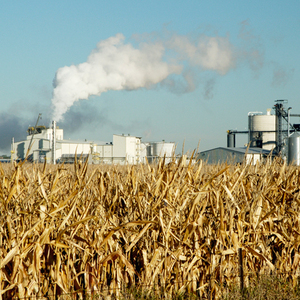RFA: USDA county-level land use data counters NWF study

April 5, 2017
BY Geoff Cooper
|
Advertisement
Advertisement
--Between 2007 and 2012 specifically (i.e., encompassing the period examined by the NWF study), total cropland in counties with ethanol plants fell by 454,000 acres, or 0.8 percent.
--On an individual county basis, 2012 cropland levels were below the levels recorded in 1997, 2002, or 2007 in the large majority (84 percent) of the counties with ethanol plants. The reduction in cropland for these 151 counties averaged 11.8 percent when compared to the highest level of cropland from 1997, 2002, or 2007.
Advertisement
Advertisement
--For the small minority (16 percent) of counties with ethanol plants where 2012 cropland was higher than the amount of cropland recorded in 1997, 2002, or 2007, the increase in cropland was minor (3.1 percent on average) and coincided with reductions in Conservation Reserve Program (CRP) land and pastureland.
--Most of the counties with ethanol plants where 2012 cropland exceeded 1997, 2002, or 2007 levels are located in the heart of the Corn Belt, not the western fringe where undisturbed grassland is more common. This provides more support for the argument that expanded cropland in these counties replaced land with previous agricultural history (such as CRP or pasture)—not prairie or other native lands.
Our full analysis is available here.
Related Stories
President Trump on July 4 signed the “One Big Beautiful Bill Act.” The legislation extends and updates the 45Z credit and revives a tax credit benefiting small biodiesel producers but repeals several other bioenergy-related tax incentives.
CARB on June 27 announced amendments to the state’s LCFS regulations will take effect beginning on July 1. The amended regulations were approved by the agency in November 2024, but implementation was delayed due to regulatory clarity issues.
SAF Magazine and the Commercial Aviation Alternative Fuels Initiative announced the preliminary agenda for the North American SAF Conference and Expo, being held Sept. 22-24 at the Minneapolis Convention Center in Minneapolis, Minnesota.
International Sustainability & Carbon Certification has announced that Environment and Climate Change Canada has approved ISCC as a certification scheme in line with its sustainability criteria under its Clean Fuel Regulations.
Legislation introduced in the California Senate on June 23 aims to cap the price of Low Carbon Fuel Standard credits as part of a larger effort to overhaul the state’s fuel regulations and mitigate rising gas prices.
Upcoming Events









